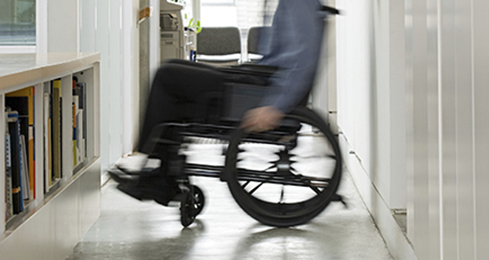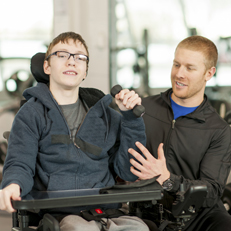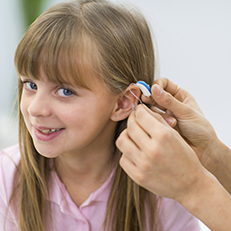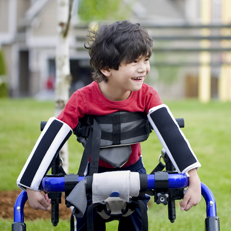
Phone: 212 520 1686
Email: info@yourcpf.org
ACCOMPANYING ISSUES


GLOBALLY,
OVER
17 MILLION
PEOPLE
HAVE CP
1 IN 5
CHILDREN
WITH CP
HAVE A SLEEP
DISORDER
DELAYED GROWTH AND DEVELOPMENT
Children with moderate to severe CP, often lag behind in growth and development. The muscles and limbs affected by CP tend to be smaller than normal, especially in children with spastic hemiplegia, whose limbs on the affected side of the body may not grow as quickly or as long as those on the normal side.
SEIZURE DISORDER
As many as half of all children with CP have one or more seizures. Children with both cerebral palsy and epilepsy are more likely to have an intellectual disability.
LEARNING DISABILITY
Approximately 30 – 50 percent of individuals with CP will be intellectually impaired. Mental impairment is more common among those with spastic quadriplegia than in those with other types of cerebral palsy.
SPINAL DEFORMITIES AND OSTEOARTHRITIS
Deformities of the spine – curvature (scoliosis), humpback (kyphosis), and saddle back (lordosis) – are associated with CP. Spinal deformities can make sitting, standing, and walking difficult and cause chronic back pain. Pressure on and misalignment of the joints may result in osteoporosis (a breakdown of cartilage in the joints and bone enlargement).
IMPAIRED VISION
Many children with CP have strabismus, commonly called “cross eyes,” which left untreated can lead to poor vision in one eye and can interfere with the ability to judge distance. Some children with CP have difficulty understanding and organizing visual information.

1 IN 5
CHILDREN WITH CP
CANNOT
TALK
HEARING LOSS
Impaired hearing is also more frequent among those with CP than in the general population. Some children have partial or complete hearing loss, particularly as the result of jaundice or lack of oxygen to the developing brain.
SPEECH AND LANGUAGE DISORDERS
Speech and language disorders, such as difficulty forming words and speaking clearly, are present in more than a third of those with CP. Poor speech impairs communication and is often interpreted as a sign of cognitive impairment, which can be very frustrating to children with CP, especially the majority who have average to above average intelligence.
DROOLING
Some individuals with CP drool because they have poor control of the muscles of the throat, mouth, and tongue.
INCONTINENCE
A possible complication of CP is incontinence (loss of bladder control), caused by poor control of the muscles that keep the bladder closed. Medical treatments for incontinence include special exercises, biofeedback, prescription drugs, surgery, or surgically implanted devices to replace or aid muscles.
ABNORMAL SENSATIONS AND PERCEPTIONS
Some individuals with CP experience pain or have difficulty feeling simple sensations, such as touch.
INFECTIONS AND LONG-TERM ILLNESSES
Many adults with CP have a higher risk of heart and lung disease, and pneumonia (often from inhaling bits of food into the lungs), than those without the disorder.
CONTRACTURES
Muscles can become painfully fixed into abnormal positions, called contractures, which can increase muscle spasticity and joint deformities in people with CP.
MALNUTRITION
Swallowing, sucking, or feeding difficulties can make it difficult for many individuals with CP, particularly infants, to get proper nutrition and gain or maintain weight.
DENTAL PROBLEMS
Many children with CP are at risk of developing gum disease and cavities because of poor dental hygiene. Certain medications, such as seizure drugs, can exacerbate these problems.

1 IN 4
CHILDREN
WITH CP
HAVE
EPILEPSY
PAIN CAN BE A PROBLEM
FOR PEOPLE WITH CP DUE
TO SPASTIC MUSCLES AND
THE STRESS/STRAIN ON
PARTS OF THE BODY THAT
ARE COMPENSATING FOR
MUSCLE ABNORMALITIES
INACTIVITY
Childhood inactivity is magnified due to impairment and control voluntary movement. While children with CP may exhibit increased energy expenditure during activities of daily living, movement impairments make it difficult for them to participate in sports and activities to develop and maintain strength and fitness. Inactive adults with disabilities exhibit increased severity of disease and reduced overall health and well-being.
EPILEPSY
Many children with intellectual disability and CP also have epilepsy. In general, drugs are prescribed based on the type of seizures an individual experiences, since no one drug controls all types. Some individuals may need a combination of two or more drugs to achieve good seizure control.
OSTEOPENIA
Children with CP who are unable to walk risk developing poor bone density (osteopenia), a family of drugs called bisphosphonates, which has been approved by the FDA to treat mineral loss in elderly patients, also appeared to increase bone mineral density. Doctors may choose to selectively prescribe the drug off-label to children to prevent osteopenia.
PAIN
Pain can be a problem for people with CP due to spastic muscles and the stress/strain on parts of the body that are compensating for muscle abnormalities. Some individuals may also have frequent and irregular muscle spasms that can’t be predicted or medicated in advance. Medications such as diazepam can reduce the pain associated with muscle spasms and gabapentin has been used successfully to decrease the severity and frequency of painful spasms. Botulinum toxin injections have also been shown to decrease spasticity and pain. Intrathecal baclofen has shown good results in reducing pain. Some children and adults have been able to decrease pain by using noninvasive and drug-free interventions such as distraction, relaxation training, biofeedback, and therapeutic massage.






